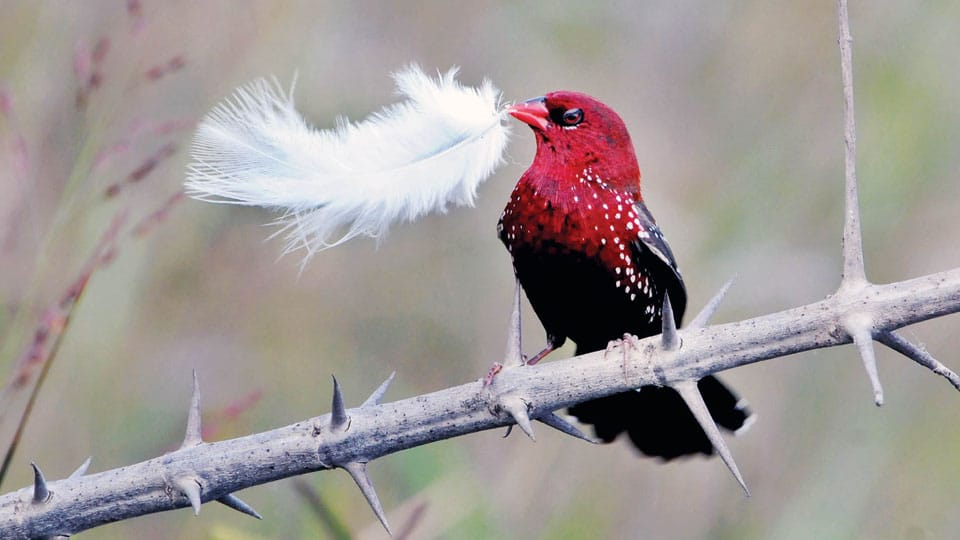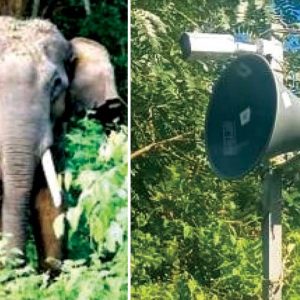In this week’s Pet Talk,Maneka speaks about bird’s nest, internal bleeding in birds and treating birds with leg paralysis
By Maneka Gandhi
My neighbours do not want me to look after the animals on our street. What do I do?
You don’t wear clothes and eat according to what your neighbours want. So why should you tailor your acts of compassion according to them. Please do not get deterred due to certain individuals. I know it is very discouraging if people of a locality foolishly hate Indian dogs and the people who look after them, but they should realise that you are protecting them by feeding and looking after dogs. A hungry sick wounded dog is dangerous. There is no law in the Constitution of India that prohibits people from looking after strays. However, you should not feed them non-vegetarian food as it leaves a stink. You should not feed them in front of people’s houses as they might get upset. And you should pick up their faeces if it is near any of the houses. There are scoopers that you can get which are easy to use. You could feed them at a designated area — the Supreme Court has ruled that every colony has to designate areas for feeding. Put collars on all of them so that they are known as colony dogs.
How do I take a stray dog to the vet?
Firstly, thank you for being a good person. Each person looks after his own possessions. Few people go out to look after the world, specially the most helpless beings in it. Gently approach the dog and make it feel reassured that you mean no harm. You could do so by offering food and water. Once you are sure that the dog trusts you, you can approach the dog. If the dog is unknown, you could use a net. Then muzzle the dog using rags or a cloth. Do so by wrapping the cloth around the jaw and tie a bow behind the ears.
- For lifting the dog, if the dog is small, cradle the neck with one hand and place your other arm over its back and around its body. Hold the dog, like a baby.
- If the dog is large, slip one arm under the neck, and place your other arm under the stomach. Lift with both arms.
- If the dog is very large, slip one arm under the neck, holding the chest in the crook of your arm. Place your other arm under the dog’s rump and, pressing your arms toward one another, lift the dog.
- In case a stretcher is needed, use a flat board or a blanket. Use a flat board if you suspect a broken back.
Finally, transport the dog to the vet. Bring it back if necessary and keep it in your verandah or house if it is still too sick. Feed it regularly and give it the medicine it needs till it is well.
Is dogfighting legal?
Dogfighting is a blood sport where two dogs fight against each other in a pit for the entertainment of the spectators. It is extremely cruel. It is done simply to watch two starved, wounded dogs fight. It is illegal under The Prevention of Cruelty to Animals Act, 1960, and the Supreme Court of India has passed a law that dogfights, cockfights and bullfights are illegal, and has asked each State to take stringent steps to eradicate this practice. If you encounter dogfighting, cockfighting or bullfighting anywhere, report it to the Police.
My three weeks old puppy has a lump on her belly. Is this a malignant tumour? Do I need to go to vet?
Lumps found on the abdomen of puppies are usually umbilical hernias. They are not dangerous. The abdomen of most animals is made up of the organs inside it, a layer of fatty tissue and then layers of muscle. These muscle layers are joined by a white strip of strong connective tissue. Sometimes, this strong white line is not complete and there is a gap. Through this gap, some of the contents of the abdomen may poke through and be felt as a soft lump around the region where your dog’s belly button (umbilicus) would be found. There is nothing to worry about this. However, if the lump is found in some other location, and you suspect that it is a tumour, take him/ her to the vet. Benign tumours usually occur in old dogs and very rarely in puppies. If the lump changes size or secretes fluids, then it might be a malignant tumour and you should immediately get him/ her checked.
Can I move a bird’s nest, with eggs in it, because I sense danger?
It is a myth that parent birds abandon their young ones or eggs if they’ve been touched by a human. Birds do not have a strong sense of smell. They rely on their eyes and ears for locating their nests. However, if a bird senses the danger of predation it prefers not to spend energy on protecting the nest and, instead, abandons the nest.
If you sense danger, you can relocate the nest to a safer region. Try and do it with the parents watching. Observe closely to ensure that the birds find their way back to the nest, and then leave it undisturbed so that they can feel safe in it.
How to identify internal bleeding in a bird?
Internal bleeding can be caused due to collisions or malfunctioning of the body organs. It is often difficult to identify. If a bird has difficulty breathing — usually under such circumstances they open and close their beaks since they’re using their mouth to breathe — it is probably due to an internal injury. Other signs include an unbalanced walk, inability to keep head straight up, sleepiness, change in colour of droppings and sometime even bleeding from the mouth. You should rush it to the vet if you suspect internal bleeding.
How should I treat leg paralysis in birds?
The causes differ, depending on your bird and his age or health status. It usually affects either in one leg or both limbs, rendering your bird helpless. Some birds can recover in a few days, others take much longer, or they may succumb to the disease that caused it.
Unfortunately there are very few vets in this country who know anything about birds. So, if you are foolish enough to keep a bird in a cage, then you should do some reading. A vet might be able to rule out certain diseases or deficiencies and then make an analysis of the remaining facts and symptoms.
It is easier to treat a disease in its initial stages than to try and attack it once it has established itself. Your veterinarian, or avian specialist, will examine your bird and ask about its history. They will want to know the type of home your bird has (aviary or cage, indoor or outdoor), whether any other birds are showing signs of paralysis, and what type of diet your bird is on.
Sometimes it can just be limited access to natural sunlight causing a nutritional deficiency (Vitamin D). Birds on the same diet, day in and day out, may also have malnutrition in some vital areas. Diagnosis is made by excluding other causes of the disease. Tests for viral or disease in footprints will allow him to determine what is causing your birds suffering. Often radiography, haematology, faecal smears and other such tests, will be done to determine the cause.
The treatment will vary depending on the cause of your bird’s condition, but even more so it will depend on the health or visible symptoms that are apparent. In a lot of cases, the exact cause is unknown, so treatment begins with treating obvious signs such as infections. Broad spectrum antibiotics can cure a bacterial cause. A change of diet and added supplements can help build up a weakened immune system or nutritional deficiency.
Adding full spectrum lamps to provide healthy UVA and UVB rays during winter can help your bird. Corticosteroids and vitamin injections may be required, or fluid therapy during the first 24-48 hours by injection may help.
If your bird’s foot is clenched, the veterinarian may suggest exercising the foot by gently stretching it open to its normal shape, then moving the legs around as though it was bicycling. This may help the limb to restore the blood flow and get the leg moving again. There is no known ‘paralysis’ cure, it is a matter or excluding other causes and then making a treatment to suit the remaining facts. For some birds that are totally paralysed, you have to consider the quality of life and make the decision whether it may not be kinder to put the bird to sleep. If it is an aggressive disease, supportive care is the only solution.
Some birds can recover fully in a few days or weeks. Your bird may remain with a clenched foot due to the paralysis, and it can live a relatively normal life. Birds tend to accept things and get on with life, and to date, there are no studies on how long a bird with a clenched foot will live.








Recent Comments